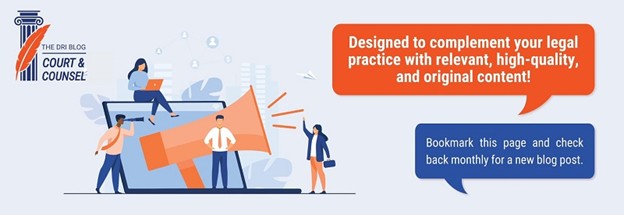Leadership Spotlight
3 Takeaways from My Conversation with XYZ University Founder Sarah Sladek on Leading Through Change
By Jill Rice, DRI First Vice President
Sarah Sladek and I sat down to talk about how we can lead organizations through change. Sarah is the founder and CEO of XYZ University and a nationally recognized voice on generational change and engagement. She was the keynote speaker at DRI’s premier leadership training event, the 2024 Leadership Conference in Seattle.
Our discussion was part of DRI’s ongoing efforts to develop future leaders among members of the civil defense bar. We focused our conversation on generational shifts, evolving expectations, and the need to build meaningful connections within the DRI Community.
There are three key takeaways from our conversation that could help lead you and your organization through change:
1. Change Must Be Intentional and Empathetic
Change is inevitable. People with mindsets of adaptability embrace change as opportunities and are more likely to learn and experience growth and success than those who see change as obstacles and become stifled by it. Even better, organizations that create change, rather than react to it, thrive. As Sarah put it, successful organizations don’t just talk about change; they plan for it. They ask: “What change is needed and why? Why now? How are we going to work together to make it happen?”
That doesn’t mean everyone will move at the same pace. Within any organization, there will be those eager to evolve and others who are more cautious. The key is empathy. Leaders must understand that people bring different perspectives to the table, and each of these perspectives can be a contributing strength to the collaborative goal. When we engage people in problem solving, innovation, and dialogue, rather than moving unilaterally, we build trust and forward momentum.
2. Breaking Down Generational Silos Is Critical
Gen Z now outnumbers Baby Boomers in the workforce. Every generation has something to offer, whether it is wisdom, energy, perspective, innovation, or other positive attributes unique to each generation. Leadership today requires breaking down silos that divide people by generation, department, or role.
At DRI, we see this as a call to action. Programs like the Leadership Conference, which helps kick off DRI’s Annual Meeting, are designed to foster cross-generational collaboration, spark conversation, and create space for shared learning. It’s not just about inviting new voices in; it’s about making sure all of our voices are heard. Building multi-generational teams, inviting different ages into the conversation, and encouraging connection are essential strategies for engaging people across any organization.
3. Engagement Requires Community and Purpose
Disengagement is a universal concern. Everyone wants to feel like they belong, and they want to know their contributions matter. Young members seek representation and a voice. Experienced members want to be valued and included. If those needs aren’t met, we lose people.
The solution? Be intentional. Engage the disengaged and embrace the newly joined. Invite young lawyers into meaningful roles on committees, task forces, and boards. Consider, for example, setting a goal of at least 30% representation under age 35, and ensure they have a meaningful seat at the table. At the same time, don’t overlook the value of past leaders. Ask them to engage in purposeful roles involving mentorship, advisory positions, outreach, or development that leverage their wisdom and keep them connected.
We also need to recognize how engagement has changed – the inevitable change. Today’s members are balancing limited time with a desire for impact and immediacy. Clear tasks, short-term wins, and visible outcomes are key motivators. But even more important, people become engaged for the connection and desire to be a part of something that matters.
At DRI, we invest in community through the DRI Foundation, with community partnerships like Blessings in a Backpack and our wellness initiatives with the Institute for Well-Being in Law. These initiatives represent our shared values that help shape the DRI culture and bring us together. They help define us and connect us.
How Can I Engage?
At DRI, members have opportunities to engage year-round, including through DRI’s 30 substantive law committees, activities of The Foundation, or projects of The Center for Law and Public Policy. There are innumerable ways to engage and leverage your membership.
But now is an especially important time to help set the tone for the next year. Join us for our 2025 Annual Meeting, where lawyers like you representing business are shaping the future of the defense bar.
You also can participate in DRI’s annual election process by learning more in the DRI Election Hub. Join us in fostering a vibrant and engaged community, where every member has the opportunity to influence the direction of DRI.
Our Strength Lies in Our Community
Sarah reminded me, and I hope all of us, that building community is the most powerful leadership tool we have. Whether navigating change, bridging generational divides, or fostering engagement, we must lead with intentionality, empathy, and a commitment to bringing people together. That’s how we grow—not just as an organization, but as a community.
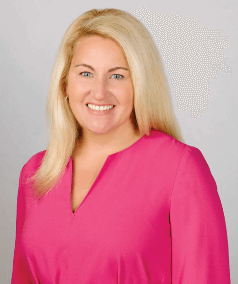 DRI First Vice President Jill Cranston Rice is a Partner at Dinsmore & Shohl.
DRI First Vice President Jill Cranston Rice is a Partner at Dinsmore & Shohl.



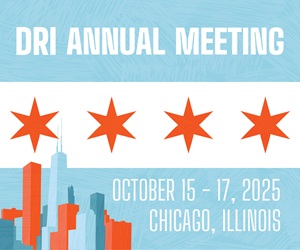

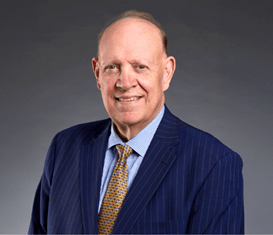



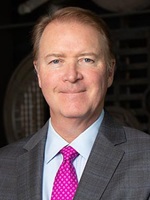


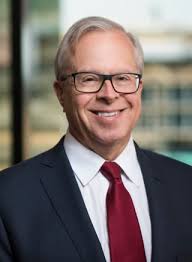 The DRI Board of Directors is proud to announce the election of John Parker Sweeney of Bradley Arant Boult Cummings to the role of Immediate Past President. Mr. Sweeney served as the President of DRI from
2014-2015 and was elected to the Immediate Past President role to fill a vacancy on DRI’s Executive Committee. He will serve through the 2026 Annual Meeting. Mr. Sweeney received DRI’s Louis Potter award for lifetime service to the legal
profession in 2022.
The DRI Board of Directors is proud to announce the election of John Parker Sweeney of Bradley Arant Boult Cummings to the role of Immediate Past President. Mr. Sweeney served as the President of DRI from
2014-2015 and was elected to the Immediate Past President role to fill a vacancy on DRI’s Executive Committee. He will serve through the 2026 Annual Meeting. Mr. Sweeney received DRI’s Louis Potter award for lifetime service to the legal
profession in 2022. .jpg?sfvrsn=98b33dd5_1)



 Cate Dugan is a Partner at Peterson White and is the Vice President of the DRI Foundation.
Cate Dugan is a Partner at Peterson White and is the Vice President of the DRI Foundation. DRI is pleased to announce that John Reeves of Reeves Law LLC in Saint Louis has been appointed to the
DRI is pleased to announce that John Reeves of Reeves Law LLC in Saint Louis has been appointed to the 
 The brief was authored by Center Amicus Committee member Charlie Frazier of Alexander Dubose & Jefferson LLP in Dallas.
The brief was authored by Center Amicus Committee member Charlie Frazier of Alexander Dubose & Jefferson LLP in Dallas. The coalition brief—authored by DRI member Jim Beck, along with fellow Reed Smith LLP partner Jamie Lanphear—was also joined by the Pennsylvania Defense Institute, the Federation for Defense and
Corporate Counsel, and the National Association of Manufacturers.
The coalition brief—authored by DRI member Jim Beck, along with fellow Reed Smith LLP partner Jamie Lanphear—was also joined by the Pennsylvania Defense Institute, the Federation for Defense and
Corporate Counsel, and the National Association of Manufacturers.

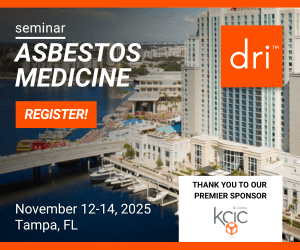
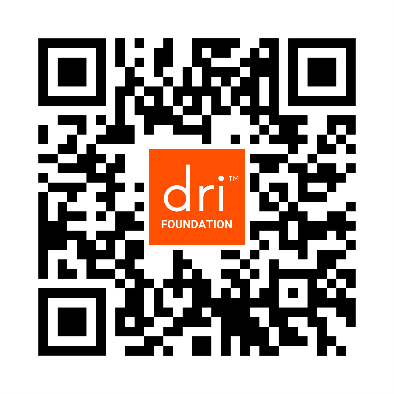
 Whitney Horak is a partner
in the Memphis, Tennessee office of Quintairos, Prieto, Wood & Boyer, P.A., and also practices from the firm's Jackson, Mississippi office. She focuses her practice and has extensive experience in the representation of physicians, hospitals and
long-term care providers in medical malpractice matters involving claims of abuse and neglect, negligence, violation of resident's rights, wrongful death and breach of contract. Ms. Horak's practice also involves the defense of general negligence
claims, catastrophic personal injury and property damage cases. Please reach her at
Whitney Horak is a partner
in the Memphis, Tennessee office of Quintairos, Prieto, Wood & Boyer, P.A., and also practices from the firm's Jackson, Mississippi office. She focuses her practice and has extensive experience in the representation of physicians, hospitals and
long-term care providers in medical malpractice matters involving claims of abuse and neglect, negligence, violation of resident's rights, wrongful death and breach of contract. Ms. Horak's practice also involves the defense of general negligence
claims, catastrophic personal injury and property damage cases. Please reach her at 